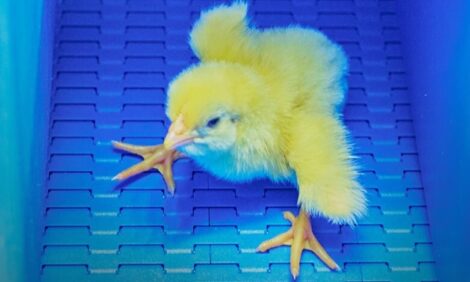



IPSF: Temperature abuse during raw chicken transport
Short-temperature abuse of chicken affects its retail shelf-lifeRaw poultry is a highly perishable commodity, with a microbiome of bacteria, both aerobic and anaerobic, affecting spoilage rates. The high moisture and protein content in chicken provide ideal conditions for bacterial growth under favorable temperatures, especially during less than truckload transportation.
The results of a study that evaluated the effects of short-temperature abuse on the microbiome of fresh chicken breast and its impact on retail shelf-life was presented in a poster session by Vianca Tashiguano and colleagues, Auburn University, United States, during the 2025 International Poultry Scientific Forum.
Freshly processed, boneless, skinless chicken breast trays from a commercial poultry processing plant were transported under refrigeration (4°C, 39°F) to Auburn University's Department of Poultry Science. A total of 150 trays were used for the experiment. The products were subjected to three temperature abuse (TA) regimes: (1) 4°C (39°F) for 24 hours (control), (2) TA at 30°C (86°F), and (3) TA at 37°C (98°F). Only two-thirds (100 trays) of the samples were subjected to temperature abuse cycles lasting 7.5 hours, with a sequence of 30 minutes at 4°C followed by 1 hour at 30°C (86°F) or 37°C (98°F), repeated over five cycles. After the temperature abuse cycles, the samples were stored at 4°C (39°F) and evaluated for shelf-life analysis at different time intervals on days 0, 2, 4, 6, and 8.
Each time, 10 trays were randomly selected from each treatment for testing. The middle fillet from each package was subjected to microbiological evaluation. Meanwhile, the fillet on the right side of the same tray was used for volatile compound analysis with an Electronic Nose. Data was analyzed using ANOVA (p<0.05) to determine statical differences between treatments.
Temperature abuse cycles at 30°C (86°F) and 37°C (98°F) increased the anaerobic and LAB counts by 1 log, while aerobic counts increased by 1 and 2 log, respectively, compared to the control samples after day 8 of storage. At 37°C (98°F), the shelf-life differences were 5.97, 5.53, and 117.62 days for the anaerobic, aerobic, and LAB results, respectively, compared to the control (p<0.05).
These findings align with the detection of volatile compounds, where amines, carboxyl acid, esters, ketones and sulfur groups containing compounds emerge as biomarkers of meat spoilage and contribute to the formation of off odors. The research demonstrates that temperature abuse for a short time can lead to an increase in spoilage rate during retail, emphasizing the need for better cold-chain management.









